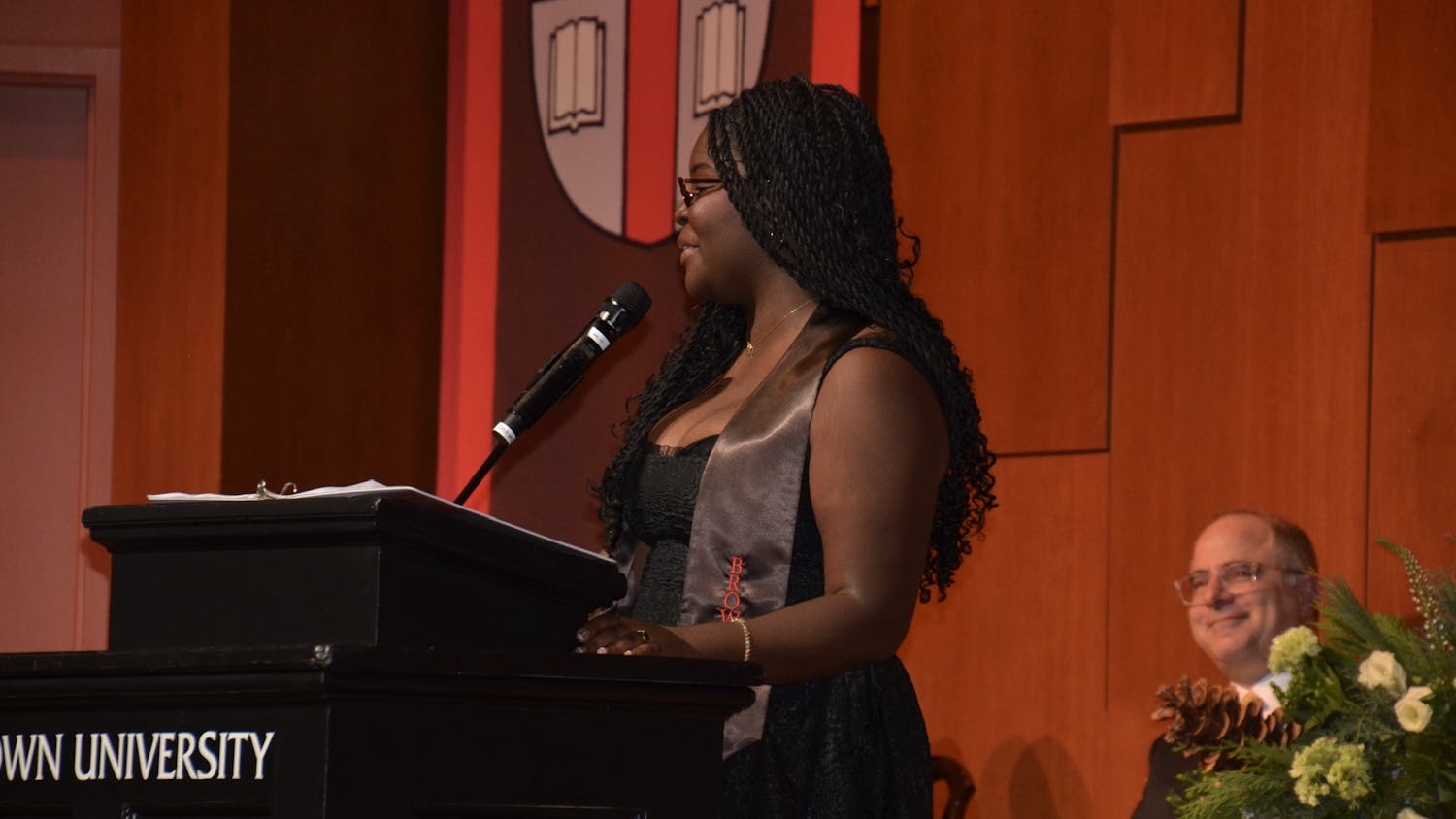Vicky Yang ’25, a third-year Brown-RISD Dual Degree student majoring in psychology at the University and illustration at the Rhode Island School of Design, described her shopping period experience as similar to working as an airport air traffic controller.
“In airports, there’s that person that is giving direction to all the airplanes, so they can land in sequence and not bump into each other and not crash,” Yang said. “That’s what I feel like (planning) my classes because there are so many conflicts.”
Established in 2007, the dual degree program is a five-year academic experience that allows students to “develop and integrate diverse spheres of academic and artistic interests” simultaneously at Brown and RISD, according to the program’s website.
But fitting courses of interest at both schools into one schedule while also meeting degree requirements comes with its own set of difficulties for students. The Herald spoke to three BRDD students about their experiences in course selection and scheduling.
Balancing courses, academic calendars at two schools
Yang, who typically takes five classes per semester, prefers to have a balanced mix of courses from both institutions in her schedule, though dual degree students are “allowed to do one full RISD or one full Brown semester.”
Since her RISD major has “a lot of requirements,” taking less than five courses per semester would make it difficult to graduate on time, Yang added. But this is “not true for every major,” she said.
Adam Meller ’25, a third-year dual degree student majoring in English and philosophy at the University and glass at RISD, said he tries to “balance between three (courses) at one (school) and two at the other,” though he plans to “do four Brown classes and one RISD class” for the spring semester.
Having access to both schools and being conscious about his course selection makes Meller feel “a sense of agency” in the registration process, he said. “It really feels like I am shaping my education constantly.”
Yang described her process of registering for courses as “very complicated.” In particular, RISD’s five-hour studio classes conflict with her interests at the University, she said. “If (your studio) takes up, for example, Monday afternoon, (you) can’t take any Monday, Wednesday (and) Friday afternoon classes at Brown.”
“The RISD studios are so hefty and lengthy. They felt like they were kind of preventing me from even considering (some) Brown classes,” said Sarkis Antonyan ’27, a first-year dual degree student interested in pursuing interior architecture at RISD and urban studies and literary arts at Brown.
This semester, Yang is able to work around her Friday RISD studio class because she can watch recordings of her Friday class at the University. “If there’s a conflict, I email both professors and work with them individually to see what can be done about it,” Yang said. “Whether they will accommodate you (or not) depends on the professor.”
Yang described RISD’s Wintersession — which allows RISD students to take a single class and ran from Jan. 5 to Feb. 8 in 2023 — as another conflict between RISD’s calendar and the spring semester at Brown. “The first half (of Wintersession) overlaps with Brown’s winter holiday (and) the latter half (overlaps) with Brown’s spring semester.”
Meller said he tends to “shop extra classes at Brown” since he “won’t know what (his) RISD schedule looks like until shopping period is over at Brown.” The University’s spring semester started Jan. 26 this year, according to Brown’s office of the registrar, which falls in the middle of RISD’s Wintersession.
Even though BRDD students can opt out of Wintersession starting their third year, Meller said he has participated in Wintersession every year possible.
Advising and the ‘five-year plan’
BRDD students are given a consistently updated document referred to as the five-year plan in their first year at the University which helps them identify their course plans.
“This helps them to map out which courses they’ll need to take at various points and to identify and navigate potential conflicts ahead of time,” Patricia Ybarra, interim director of the dual degree program, wrote in an email to The Herald.
Designing the five-year plan means “I need to be more familiar with … the course offerings (at both schools) and try to predict the way I can take (courses) without certain conflict,” Yang said. “If I don’t pay more attention to course offerings, it will be very difficult in my fourth or fifth year to make things happen.”
Yang said there’s not “really much of a system designed for (BRDD students) to navigate through two schools and resolve (scheduling) conflicts,” and that making the process easier would also allow Brown students to take RISD classes more frequently and vice versa.
Antonyan said that he has felt “supported” throughout the registration process due to the work of RISD advisors and administrators. He added that BRDD students themselves are a source of support for one another, although he wishes he met with advisors more often after registration.
Ybarra encouraged BRDD students who are struggling to manage course scheduling to get in touch with their advisors as early as possible. “They (also) have their RISD major advisor and Brown concentration advisor for guidance on selecting courses at each institution,” she added.
“We are reviewing … how to make these policies more user-friendly for students,” Ybarra wrote. “It’s very tricky to come up with one-size-fits-all solutions for difficulties in course conflicts” with all of the different degree combinations across the two schools.
She added that “regular advising is key” since classes at both schools change constantly. “A perfectly planned schedule in the second year may not work out as planned in the fourth year.”
“What is great about this program is that the students keep pushing the boundaries of what is possible,” Ybarra wrote.
“I feel like this program is so unique. Some days I get to read about climate change and then on my desk I have two paintings drying, and I look at both sitting next to each other,” Antonyan said. “It just feels very special. I feel like multiple sides of my character are being tapped into.”
Indigo Mudbhary is a University news senior staff writer covering student government. In her free time, she enjoys running around Providence and finding new routes.





